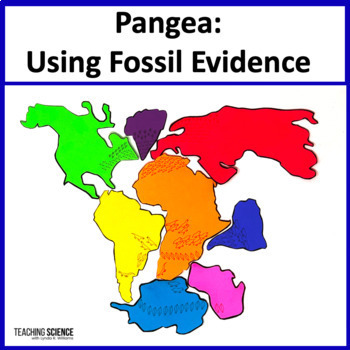Pangea Unit for Middle School
About 300 million years ago, Earth didn't have seven continents, but instead one massive supercontinent called Pangaea, which was surrounded by a single ocean called Panthalassa.
The explanation for Pangaea's formation ushered in the modern theory of plate tectonics, which posits that the Earth's outer shell is broken up into several plates that slide over Earth's rocky shell, the mantle.
Over the course of the planet's 3.5 billion-year history, several supercontinents have formed and broken up, a result of churning and circulation in the Earth's Mantle, which makes up most of the planet's volume. This breakup and formation of the supercontinent have dramatically altered the planet's history.
Pangea and continental drift are so fun to learn about! Make it even easier to teach Pangea to your middle school science class with this complete unit! Students will learn about plate tectonics, the theory of continental drift, seafloor spreading, and Pangea.
It's a standards-aligned unit that will meet the standards for NGSS MS-ESS2-2 and 2-3 as well as Utah SEEd 7.2.2 and 7.2.5!
MS-ESS2-2. Construct an explanation based on evidence for how geoscience processes have changed Earth’s surface at varying time and spatial scales.
MS-ESS2-3.
Analyze and interpret data on the distribution of fossils and rocks, continental shapes, and seafloor structures to provide evidence of the past plate motions
Utah SEEd
Standard 7.2.5
Ask questions and analyze and interpret data about the patterns between plate tectonics and:
(1) The occurrence of earthquakes and volcanoes.
(2) Continental and ocean floor features.
(3) The distribution of rocks and fossils.
Utah SEEd
Standard 7.2.2 Construct an explanation based on evidence for how processes have changed Earth’s surface at varying time and spatial scales. Examples of processes that occur at varying time scales could include slow plate motions or rapid landslides. Examples of processes that occur at varying spatial scales could include uplift of a mountain range or deposition of fine sediments.
Your free time is so precious - don't spend it creating a unit on Pangea. I've done the work for you!






